Oh, and I did have to turn one of the deadeyes on the forward channel after seeing the picture I postedIs it possible there is a deadeye 3 degrees off center?? Nahhhhh!


 .
. |
As a way to introduce our brass coins to the community, we will raffle off a free coin during the month of August. Follow link ABOVE for instructions for entering. |
 |
Oh, and I did have to turn one of the deadeyes on the forward channel after seeing the picture I postedIs it possible there is a deadeye 3 degrees off center?? Nahhhhh!


 .
.Good morning Paul. Immaculate work as always. Linings and bolsters are always ugly....they just spoil a ships elegant lines.... IMHO - Even the mastery of Paul Dockattner cannot change that.........Another small update...
Part 1: Previously I mentioned that I was waiting for some ordered brass stock to arrive, and that package came early this week. This allowed me to complete the preventer plates (chain plates) bringing the installation of the chains/deadeyes to a conclusion.
A brief photo essay showing the stages of production:
View attachment 498237
View attachment 498238
View attachment 498239
View attachment 498240
View attachment 498241
View attachment 498242
View attachment 498243
The preventer plates on swan class ships were not actually 'plates' - they were made from square iron bar stock. To simulate that I scribed the center of my brass plate:
View attachment 498244
Hard to capture that in a photo but I tried.
Part 2: As an anchor is fished it swings in an arc along the side of the ship. In order to prevent damage to the wales, and to keep the flukes from tangling with the chains, it was necessary to install a barrier.
The lower curved portion is simply referred to as a lining, the shelf above that is called a bolster and it is wide enough for a sailor to stand on when taking soundings (Antscherl Vol 2 p 268). The upper portion is called a billboard.
View attachment 498246
View attachment 498245
The planks of the lining and the billboard were replaceable and that explains the headed bolts.
As always, I am grateful that you would take time away from your own ship project(s) to pay me a visit.
 . Cheers Grant
. Cheers GrantOh, and I did have to turn one of the deadeyes on the forward channel after seeing the picture I posted

.
 .
.Well, I can't argue the point...Good morning Paul. Immaculate work as always. Linings and bolsters are always ugly....they just spoil a ships elegant lines.... IMHO - Even the mastery of Paul Dockattner cannot change that.......... Cheers Grant
I remember the feeling I had when adding the rudder to my Vasa, it's as if the ship is now ready for action!The rudder I built more than a year ago has been installed. This s^%& just got serious...
View attachment 498340
View attachment 498341
View attachment 498339
That is looking very great, Paul. Now it's a ship!The rudder I built more than a year ago has been installed. This s^%& just got serious...
View attachment 498340
View attachment 498341
View attachment 498339
Admiral Farragut chose a third option at Mobile Bay, GA in 1864, with his immortalized quote: "Damn the Torpedo's, Full Speed Ahead!" BUT you are correct...having the port or starboard option is invaluable!!!Now you can go left or right, you have the choice.....
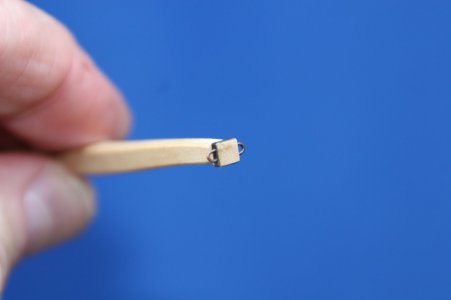
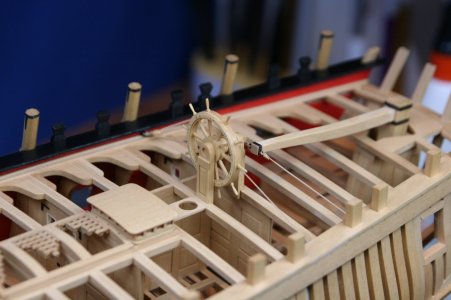
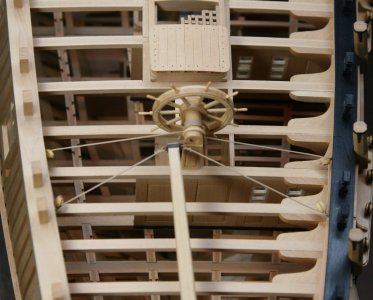
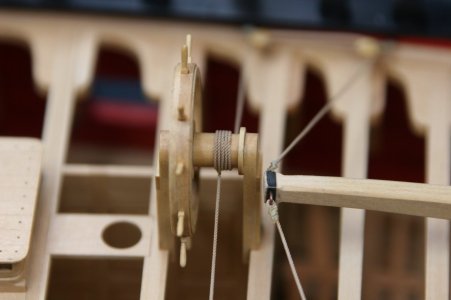
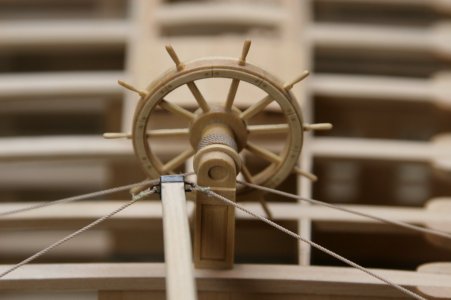
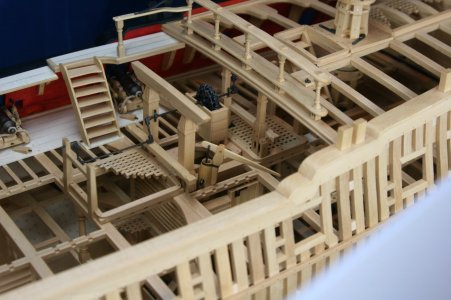
All along I have been confident normal people can do what I am doing... In any case, I'll take your thumb any day!Only a tumb for this one, a normal person could achieve this update to......but it looks good.
Thanks, Brad! Real ship...that's what I am shooting for. But you are very kind with your assessment!Photography and Workmanship - Exquisite!!
The detail on the steering wheel, lines and metal fittings, make us feel like we are looking at the real ship!! Pump tops DITTO!
Thanks for sharing.
Thank you, Maarten. What you are suggesting makes perfect sense. I have patterned the rigging after Antscherl.Very clean work Paul.
Ps isn't there a block below the steering wheel to guide the rope parallel to the deck. Now there is a tensioned rope under an angle from the steering wheel to the ships side.
Thank you for the encouraging post! It motivates me to continue.Amazing wonderful craftsmanship!!! WOW!!!
